Why Email Campaigns Work for B2B Addiction Treatment Marketing?
An email advertising campaign is traditional, but is the most powerful tool for B2B addiction treatment marketing. This is because it combines scalability, personalization, and professionalism in ways that other channels cannot. In the recovery industry, where trust and credibility are important, email offers a direct line of communication between healthcare providers, referral partners, and addiction treatment centers, along with other organizations working in the continuum of care. B2B campaigns in addiction treatment focus on building partnerships. Email supports this by enabling treatment centers to demonstrate thought leadership, highlight accreditation, and share research-based insights.
A fully structured campaign helps in positioning a treatment center as a reliable partner. Compliance and trust are the core of this channel’s effectiveness. With firm regulations like CAN-SPAM, GDPR, and HIPAA shaping how data is shared, email allows treatment centers to engage in permission-based, secure, and ethical communication. This ensures authority and reinforces that sensitive health-related conversations remain compliant and professional. Email is a tool for fostering relationships, nurturing trust, building authority, and a way to reach decision-makers who drive long-lasting partnerships in the addiction treatment space.
Understanding the B2B Audience in Addiction Treatment Marketing?
Email campaigns for B2B addiction treatment marketing become effective when you understand who you are communicating with and when you clearly define it. B2B campaigns target referral networks, professionals, and treatment centers that play a huge role in treatment pathways and patient care. Every segment has various priorities, so customizing your message is necessary.
Who Are You Emailing?
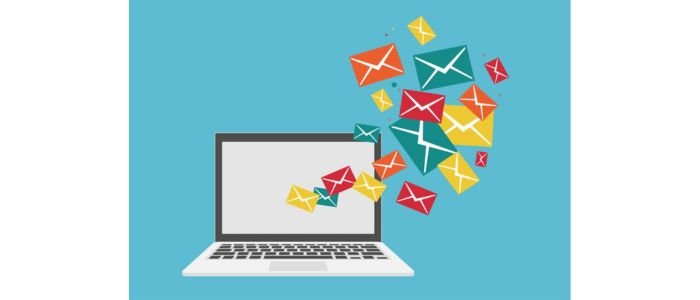
Every audience requires a very different approach. In the addiction treatment industry, B2B email campaigns usually reach the following:
- Treatment Centers: Facilities may look for specialized program collaborations, referral opportunities, and partnerships.
- Telehealth Providers: Digital healthcare platforms wanting to expand recovery services.
- Sober Living Homes: Transitional housing providers looking for partnerships and ongoing clinical support.
- Payers and Insurers: Companies evaluating outcomes, compliance, and cost-effectiveness.
- Healthcare Professionals: Clinicians, therapists, and physicians seeking trusted treatment centers for patient referrals.
- EAPs (Employee Assistance Programs): Treatment centers offering addiction support as a part of workplace wellness.
- Referral Partners: Social workers, interventions, and case managers who connect people with treatment options.
Direct-to-Consumers Messaging vs. B2B
B2B emails focus on long-term value, compliance, and credibility. D2C messaging typically highlights emotional appeal, recovery stories, and hope to motivate people to get help. B2B communication should remain partnership-oriented, data-driven, and professional. Decision-makers tend to see evidence of effectiveness, proof of compliance, and clear operational benefits with healthcare regulations. By understanding these differences, addiction treatment advertisers can design campaigns that reflect professional audiences.
How to Build an Ethical & Compliant Email List?
When advertising addiction treatment services in a B2B context, creating an email list demands ethical responsibility and strict compliance. Since you are dealing with a sensitive healthcare sector, maintaining credibility and protecting privacy are non-negotiable. Below are 3 steps for building an ethical and compliant email list.
Step 1: Maintaining List Hygiene & Avoiding Spam Traps
Spam traps can damage your deliverability and reputation. To avoid this, don’t buy third-party lists. Instead, clean your database regularly by removing inactive or invalid emails. Monitoring engagement levels, open rates, and bounce rates ensures that campaigns are only reaching interested and valid professionals. An ethical, compliant, and clean sourced email list improves the effectiveness of B2B addiction treatment marketing campaigns and increases trust.
Step 2: Opt-In Methods for B2B Contacts
The most dependable way to grow an email list is via permission-based opt-ins. By motivating voluntary sign-ups, you can create a list of interested and engaged contacts. Examples are:
- Partnership inquiries via your website.
- Sign-up forms at industry conferences, webinars, and events.
- Offering a research report, case study, and whitepaper in exchange for an email.
Step 3: CAN-SPAM, HIPAA, GDPR, and Ethical Considerations
Regulations like the CAN-SPAM Act, HIPAA (Health Insurance Portability and Accountability) in the U.S., and GDPR (General Data Protection Regulation) in Europe set clear and strict boundaries on how professional and personal information can be used, stored, and collected. This is important because it suggests practices for how communication should be focused on value, respect, and professionalism. Addiction treatment advertisers have to ensure the following:
- Unsubscribe options are always honored and visible.
- Sensitive health information is never shared insecurely.
- You have clear consent before sending emails.
5 Types of Email Campaigns for B2B Addiction Treatment Marketing
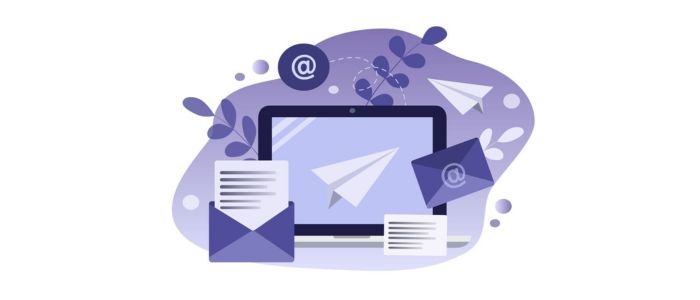
When it comes to B2B addiction treatment marketing, various types of emails enable healthcare organizations, referral partners, and treatment centers to connect in meaningful ways. Every campaign type must be designed with the long-term partnership goals, compliance standards, and recipient’s needs in mind.
Partnership Outreach Emails
Partnership outreach is the key to B2B growth in the addiction treatment space. Such campaigns are created to introduce collaboration opportunities with different healthcare networks, EAPs, and sober living facilities. For example, an outreach email can invite other recovery centers to discuss referral partnerships or highlight a new detox program. This tone must be benefit-driven and professional, focusing on how the partnership improves continuity of care, strengthens the referral pipeline, and supports better patient outcomes.
Educational & Nurture Campaigns
Educational emails are beneficial tools for adding credibility in the addiction treatment space. Such campaigns share industry updates, treatment methodologies, and research findings. For example, a recovery center may distribute a monthly newsletter that highlights a new accreditation standard, advances in telehealth, and evidence-based practices. Nurture sequences enable advertisers to guide patients through a relationship-building path. These emails offer a consistent value, ensuring that when a referral decision has to be made, your treatment center is top of mind.
Success Story & Case Study Emails
Real-world stories backed by data build credibility in the healthcare field. Case study emails enable partners and treatment facilities to show measurable results, like successful collaboration with insurance providers, reduced relapse rates, and patient recovery statistics. By presenting human impact with facts, these emails demonstrate proven results and strengthen authority.
Conferences & Event Invitations
Addiction treatment professionals attend industry conferences, healthcare networking events, and rehab expos. Email is a solid way to ensure engagement and increase attendance before and after these events. A well-designed invitation email must have clear instructions on how to register, key sessions or speakers, and the event’s purpose. Follow-up reminders keep the event in the attendees’ minds, while post-event emails can share recordings, presentations, and session highlights. This keeps connections warm and extends the value of participation.
Re-Engagement Campaigns
Re-engagement emails are made to revive inactive referral sources or partners by reminding them of the value you offer. These emails can include improved services, industry recognitions, and new treatment programs. Offering sources, like an invitation to a private webinar or an updated referral guide, can also spark interest. Re-engagement emails must strike a balance between being respectful and persuasive.
8 Strategies for Email Campaigns in B2B Addiction Treatment Marketing
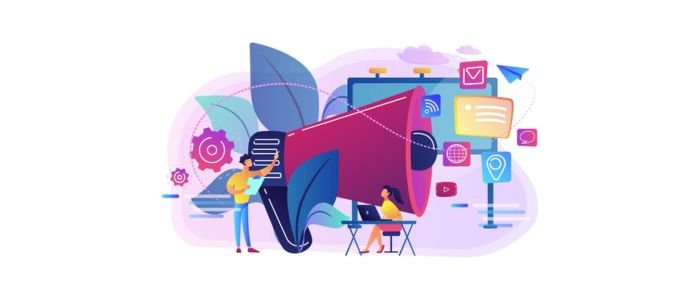
Designing effective email marketing campaigns for addiction treatment centers requires a balance of compliance, sensitivity, and professionalism. B2B efforts emphasize fostering partnerships, nurturing trust, and building credibility. Below are strategies and best practices to guarantee that your email campaign mirrors decision-makers in employee wellness, insurance, healthcare, and related sectors.
1. Persona Development & Target Audience
In B2B addiction treatment advertising, targeting insurance brokers and HR managers is not enough. Decision-making becomes nuanced, and every role has various motivations. A detailed buyer persona must include:
- Demographics: Career background, seniority, and age.
- Preferred Communication Style: Some audiences respond better to human stories, while others prefer data-driven reports.
- Goals: Clinical directors want evidence-based referral partners, while wellness coordinators want a healthier workplace.
- Pain Points: Insurers want outcomes and compliance, and HR managers could focus on absenteeism costs.
Example Persona for Key Decision-Makers
Developing these personas ensures that your email copy addresses the priorities of the recipient directly, making it likely to generate trust and engagement.
- Insurance Brokers: Focused on compliance with federal/state regulations, cost-effectiveness, and treatment outcomes.
- Employee Wellness:Coordinators: Looking for credible partners to improve EAP offerings.
- HR Managers: Concerned about workplace productivity, healthcare costs, and employee absenteeism.
2. Segmentation
In addiction treatment advertising, sending the same message to each contact may damage credibility. Decision-makers want relevant and personalized insights.
Segmentation Segmentation Strategies
Strategic segmentation ensures your message is valued by every type of recipient.
- By Buyer Journey Stage
- Awareness: Educational emails with research insights.
- Consideration: Program comparisons and case studies.
- Decision: Referral program outlines or partnership proposals supported with a direct call feature for quick conversations.
- By Company Size: Large organizations sometimes want scalable solutions, and smaller clinics want collaborative partnerships.
- By Industry: Customize message for sober living facilities, EAPs, insurers, or healthcare providers.
3. Email Cadence
A welcome series of emails helps in establishing trust in the early stages. These emails must have:
- Introduce your mission and organization.
- Share a free resource, like a research paper on workplace addiction.
- Outline what type of communication they can expect going forward.
Including a CTA (click-to-call) with a unique tracking number gives new contacts the chance to talk with your outreach staff right away. This integrates smoothly with pay-per-call campaigns, ensuring it generates leads for recovery centers and attribution for early engagement.
Lead-Nurturing Sequences for Warm Leads
Here, pay-per-call works as a conversion point. After 4 or 5 nurturing emails, add a click-to-call. For engaged contacts, nurturing campaigns provide the benefits of:
- Guiding recipients towards partnership discussions.
- Position your treatment facility as a thought leader.
- Provide consistent education over weeks and months.
Re-Engagement Campaigns
Inactive contacts need a gentle reminder. Offer a direct-dial pay-per-call CTA, so that interested contacts don’t have to go through multiple clicks to reconnect. Re-engagement campaigns can highlight:
- Invitations to industry conferences and webinars.
- Recent case studies showing proven results.
- New certifications or services.
4. Lead-Nurturing Campaigns
Educational Content
Sharing resources having valuable content shows your organization as a trusted knowledge source. Always add a call-now option with downloads, inviting decision-makers to talk about the materials with your staff through a talked phone line.
Case Studies
Decision-makers want proof that partnerships work. Shared stories can close with a phone CTA. Case study emails must highlight:
- Better Workplace Culture: For organizations wanting employee wellness.
- Reduced Absenteeism: For HR teams tracking cost savings.
- Improved Productivity: For employers wanting to integrate addiction treatment partnerships.
Expert Q&As
Bringing in addiction specialists, therapists, or medical directors builds authority. Offer a live consultation via call with a specialist as a part of the email CTA that aligns naturally with pay-per-call tracking. Q&A-style emails can:
- Reinforce the professionalism of your staff.
- Clarify misconceptions about treatment approaches.
- Answer common industry questions.
5. Relationship-Building & Outreach
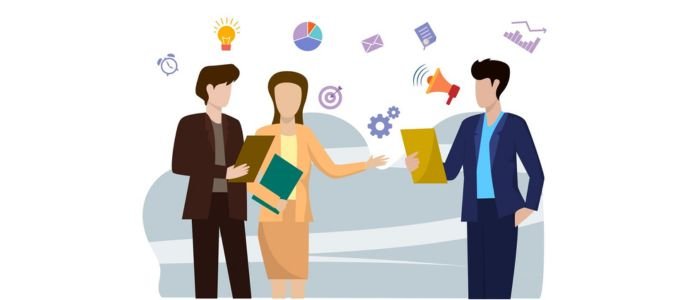
Personalized Cold Emails
When reaching out to new clients, avoid promotional tones. Instead, make the pay-per-call CTAs feel natural in every step. Focus on specific pain points, for example:
- Subject Line: ‘Reducing Workplace Absenteeism: A Proven Approach‘.
- Body: Highlight a service or resource that addresses HR concerns.
Partnership Proposals
Using a dedicated pay-per-call number lets you measure how many proposals resulted in direct conversations, providing ROI on the outreach. Emails that suggest collaborations or referral programs must have:
- Offer a next step, like schedule a call.
- Highlight ethical and compliance standards.
- Clearly define mutual benefits.
Event Invitations
Add a pay-per-call hotline for group registration or event inquiries, creating a measurable and direct engagement path. Use email to:
- Sending reminders leading up to the event and follow-up afterward.
- Share key details and promote events.
6. Building Authority & Trust
Testimonials
Sharing professional testimonials from happy B2B partners creates credibility. These must:
- End with a CTA to call your partnership staff for a consultation.
- Highlight measurable results, like improved employee well-being and cost savings.
- Be transparent and permission-based
Spotlight on Staff
Staff introduction humanizes organizations. Combine this with a direct phone CTA to motivate one-on-one conversations with your outreach staff. Emails may feature:
- Sharing the team’s participation in industry conferences and research.
- Highlight staff expertise in specialized treatment areas.
Certifications & Accreditations
Decision-makers want assurance that they are joining hands with a reputable and compliant provider. Feature credentials like state certifications or Joint Commission accreditation communicate reliability and professionalism. Include a phone CTA for partnership discussions or verification to ensure a direct action path.
7. Crafting the Right Message
Tone: Evidence-Based, Empathetic, Professional
Your tone must balance compassion with professionalism. B2B emails must:
- Avoid stigmatizing language.
- Use data to support claims.
- Show empathy for workplace challenges.
Subject Line Strategies
Strong subject lines emphasize value and avoid spammy language. Examples are:
- ‘Helping HR Leaders Build Stronger Wellness Programs‘.
- ‘New Research: The Cost of Addiction in the Workplace‘.
Personalization at Scale
For every group, add a dedicated pay-per-call line so that they can reach the right staff members directly. Use automation and segmentation to customize messaging to different roles:
- Marketers/HR: offer employee-focused solutions.
- Clinical Directors: Highlight evidence-based care and treatment results.
- CEOs: Focus on organizational ROI and impact.
Storytelling in a Sensitive Industry
Stories reflect when they are told with care. Share workplace case studies or anonymized success stories that impact, have compliance standards, and respect confidentiality.
8. Structure & Design Best Practices
Mobile-First Design
Most professionals open emails on mobile devices. This is why you have to ensure the following:
- CTA buttons optimized for smartphones, add a ‘Call Now’ button that triggers pay-per-call tracking.
- Clear formatting and short paragraphs.
- Responsive design for all screen sizes.
Call CTAs
When using pay-per-call, include a trackable phone number within CTAs directly to measure campaign effectiveness. Each email must guide the recipient towards the next step, like:
- Register for a webinar on workplace addiction management.
- Download a whitepaper for industry insights.
- Schedule a call to discuss partnership opportunities.
Visuals to Support Messaging
Visual elements reinforce authority and enhance readability. Pair visuals with a hotline number or a bold call button to ensure decision-makers have different ways to engage. Consider the following:
- Research Highlights: Using visuals or charts to present outcomes data.
- Accreditation Badges: Display compliance credentials.
- Infographics: Summarizing key research statistics.
Smart Email Automation for B2B Addiction Treatment Marketing
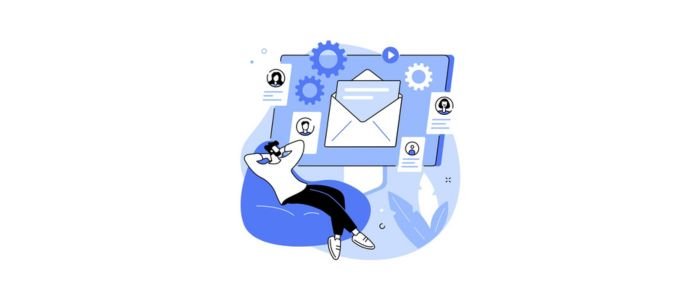
Email automation enables addiction treatment marketers to create B2B relationships. You can create drip campaigns; it is a series of scheduled emails crafted to guide decision-makers via a partnership journey. This ensures that each contact gets relevant and consistent communication customized according to their interests.
Cadence & Timing for B2B Campaigns for Addiction Treatment Marketing
B2B decision-makers want non-intrusive and thoughtful communication. The cadence must reflect the complexity of the purchasing cycle in the addiction treatment partnership. By strategically spacing messages, automation keeps the treatment centers visible without producing fatigue, making it easy to move clients from interest to a live partnership or conversation. This can include:
- Re-Engagement Campaigns: Monthly check-ins for inactive contacts, provide a direct phone consultation, or offer new resources.
- Nurture Sequences: Weekly or bi-weekly educational content like industry updates, Q&As, or whitepapers.
- Welcome Series: 3-4 emails over the first week.
Integrating Email with Various Marketing Channels
B2B addiction treatment marketing works like magic when email is used as a part of a coordinated multi-channel strategy. By fusing email with various platforms, like retargeting ads, pay-per-call campaigns, webinars, and LinkedIn, partners and treatment centers can build trust-driven and stronger relationships and amplify their reach.
a. Email + Whitepapers or Webinars
Educational resources like whitepapers and webinars have high-value content that shows your treatment center as authoritative. Email campaigns can invite clients to download a whitepaper or attend a live webinar, whereas follow-up emails deliver summaries, recordings, or related resources. This multi-step strategy nurtures contacts who want in-depth learning before they commit to a partnership.
b. Email + LinkedIn Outreach
Email and LinkedIn complement each other by providing informal and formal touchpoints. Decision-makers can open your email and engage more comfortably with a LinkedIn message or connection request. Sharing success stories or industry updates on LinkedIn and referencing those same resources in the emails creates exposure that results in trust.
c. Email + Pay-Per-Call Affiliate Campaigns
Pay-per-call aligns naturally with emails since they turn digital engagement into direct phone conversations. Once the contact is nurtured via an email series, you can add a dedicated and trackable phone number as a CTA. This makes performance measurable and improves conversion rates because calls can be tracked back to a specific sent email.
d. Email + Retargeting Ads
Retargeting keeps your addiction treatment center visible when decision-makers are not engaging actively with your emails. When these ads are combined with consistent email follow-ups, clients get a multi-channel approach and gentle reminders that motivate them to book a call and explore partnership opportunities.
Conclusion
In B2B addiction treatment marketing, email is a reliable foundation, but its actual strength lies on how it transforms alongside broader digital strategies. As addiction treatment centers search for dependable partners to improve access to care, the inbox becomes a bridge for a meaningful dialogue. What sets successful campaigns apart is knowing when to open the door for deeper conversations, when to invite, and when to inform. By approaching email as a part of a wider ecosystem of value exchange, credibility, and trust, treatment centers can build partnerships that truly support better results in workplaces and communities alike.
FAQs
What is the success rate of B2B email marketing for addiction treatment centers?
On average, B2B emails see a bounce rate around 2.5%, a click-through rate near 2%, and an open rate of about 42%. The typical click-to-open rate is around 5.6%, providing you with a solid benchmark for measuring campaign performance.
What is the best time to send B2B marketing emails?
The best time to send B2B marketing emails is on weekdays, especially Tuesday to Thursday. For higher engagement, typically between 9-11 a.m.
Does cold emailing work for B2B addiction treatment marketing?
Yes. Cold emails are the easiest way to optimize, and are scalable and cost-effective. The best results come when they are combined with pay-per-call in multi-touch campaigns.
How does pay-per-call fit with email marketing?
To fit pay-per-call with email marketing, you have to add a tracking phone number CTA or dedicated numbers in emails so that high-intent clients can call directly, and you can attribute calls to campaigns.
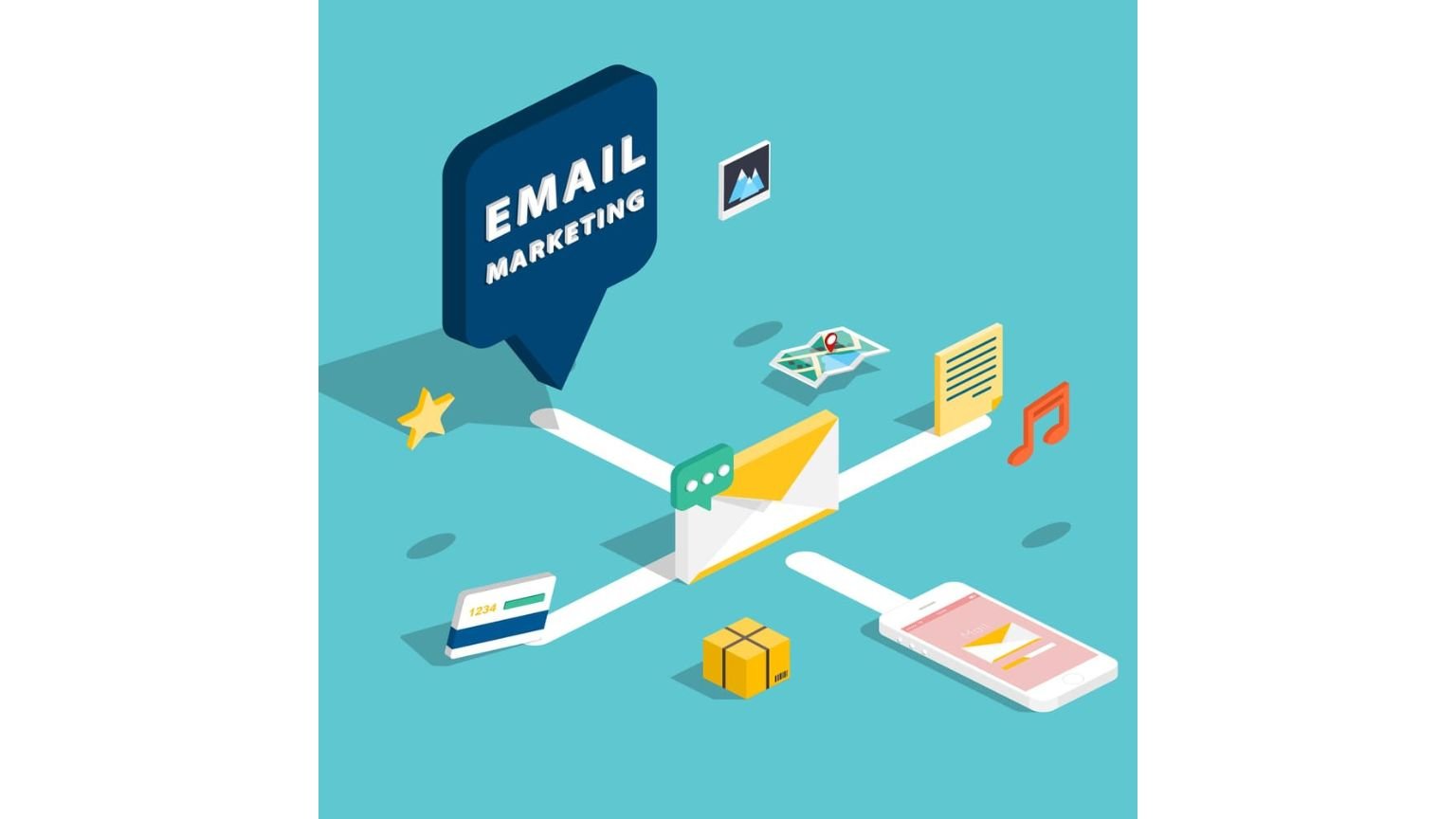

Leave a Reply